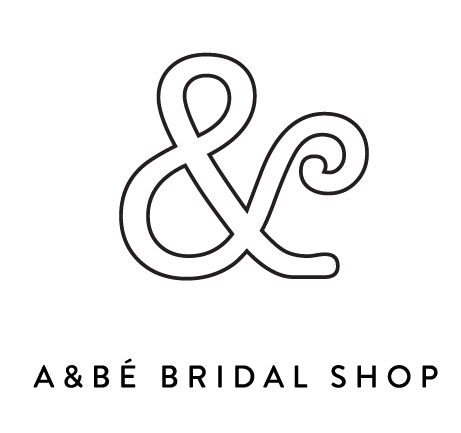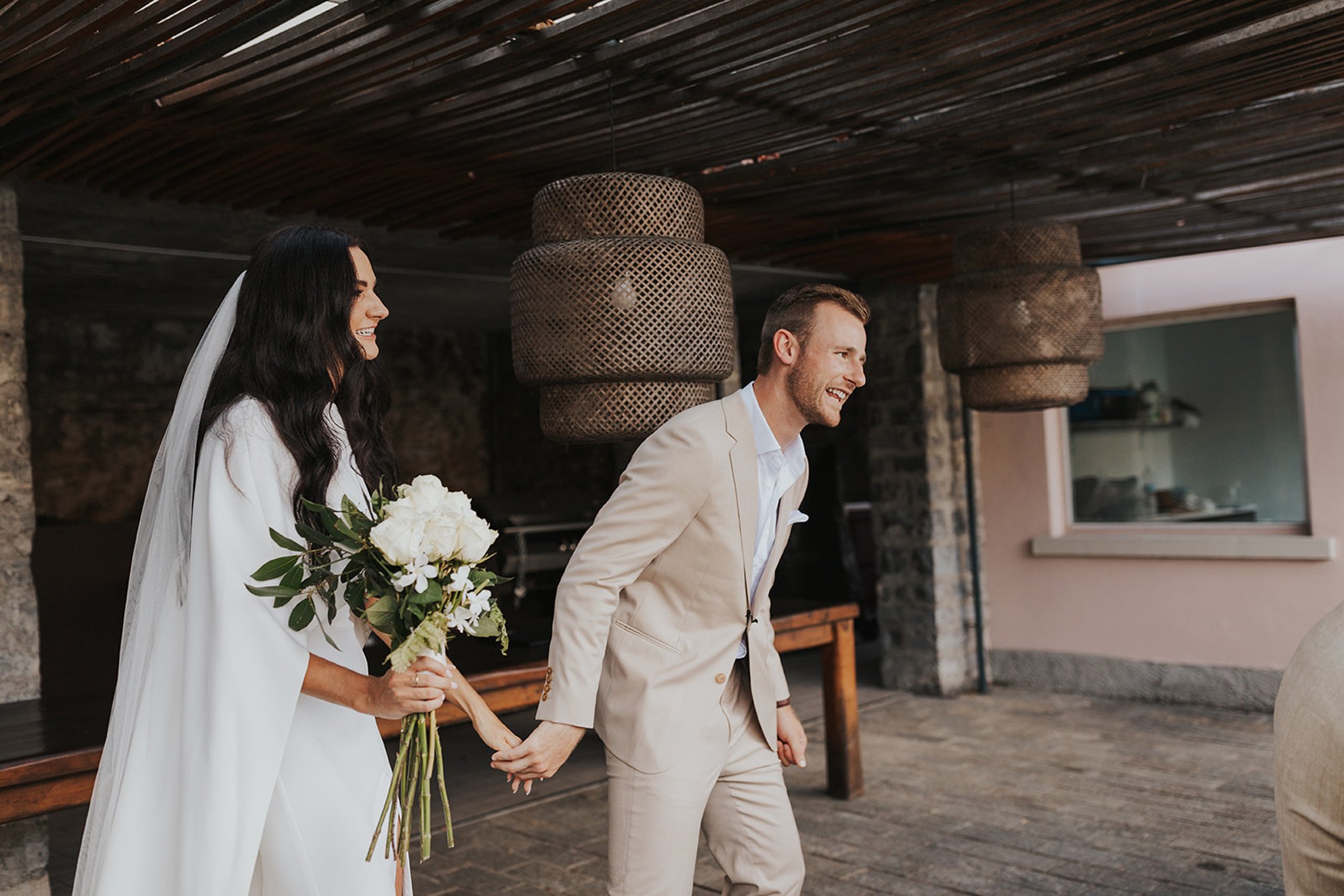HOW TO WEAR A VEIL
‘donna veil’ by sara gabriel and the ‘zoe’ gown by vagabond / photographer: cait swithers
HOW DO YOU WEAR A VEIL?
so you’ve found your dress and you want to know how do you wear a veil. or perhaps, you haven’t found your wedding gown yet, but you want to learn more about bridal styling and how to put on a veil.
we’ve got answers to all your burning bridal questions and #aandbabe bridal photos for inspo. now let’s break down the different ways to wear wedding veils.
CAN I WEAR MY HAIR DOWN WITH A VEIL?
we hear this question a lot during bridal appointments and the answer is… absolutely! though, unless you’re set on your bridal hairstyle, we usually encourage you to take your wedding dress into consideration when deciding how you want to wear your hair on your wedding day.
for example, maybe a strapless dress feels too open at the top and wearing your hair down with a strapless bridal gown would make you more comfortable.
the same can be said for a wedding dress with detail. maybe you have an interesting wedding dress neckline you don’t want to cover. in that case, you’d probably decide to wear your hair in a bridal updo.
if you ultimately choose to wear your hair down, your hairstylist will help you envision the different hair down bridal styles.
usually, they’ll want to include support like hair pins or a hidden braid to help the veil stay in place, especially if the veil has heavier beading or embroidery.
wedding veil details can be discussed at your bridal hair trial. it may even be helpful to have your veil at your wedding hair appointment so you can practice different hairstyles with your actual veil.
‘emelia veil’ by poppy lane and ‘archie’ gown by made with love / photographer: mackro photography
DOES MY VEIL GO OVER OR UNDER BUN?
if you wear your hair up in a bun or other updo, you can usually wear it over or under. this totally depends on the look you like and how much support that style offers.
when wearing a veil under a bun, you usually have a little less “grip” than if you were to place the comb over the bun.
once again, these techniques can be discussed during your bridal hair and makeup trial run!
HOW DO YOU PUT ON A VEIL?
this is another common bridal appointment question. learning how to put on a veil is not only important for the bride, but also important for select bridal party members to know in case the bride is in need of help day-of.
rather than writing out the instructions of how to wear a veil, we think this instructional video, created by our sister-store anna bé bridal boutique, may be easier to digest. take a look and become a wedding veil pro in minutes!
watch this wedding veil tutorial!
a lace mantilla veil and ‘atlas’ gown by vagabond
WEDDING VEIL STYLES
the sheer number of wedding veil styles can be overwhelming when you begin wedding dress shopping. narrowing down your wedding veil selection by details and length will likely be easiest!
UNIQUE WEDDING VEILS
birdcage veil
the perfect option for retro brides, this vintage inspired wedding veil is usually made of a wide net material accented by jewels or feathers. birdcage veils are often best for courthouse weddings, elopements, bridal portraits, and more.
mantilla veil
unlike other veils, mantilla veils drape over the head. commonly seen at church weddings, mantilla veils are ideal for brides wanting a traditional wedding veil with lace.
blusher veil
another question we often get is “do you have to wear a veil over your face?”. the answer is, no. that being said, if you do want to wear your veil over your face, you’ll want to shop for a blusher veil.
if you find a veil you absolutely love, but it doesn’t have a blusher layer, don’t fret. some veil designers will add a blusher layer to your veil for an additional fee.
cathedral length veil by sara gabriel and ‘amelia’ by alyssa kristin / photographer: lauren kendall photography
COMMON WEDDING VEIL LENGTHS
below are the three main wedding veil lengths. when picking the length of your wedding veil, much of the decision depends on your personal preference.
for instance, some brides ask, “should my veil go outside of my train?”. having your veil be longer than your train is common, but isn’t the case for all brides. perhaps you want easier mobility or maybe you are wearing an heirloom veil that isn’t as long as the train of your dress.
the length of your veil has little significance other than style, so don’t focus too much on that factor when choosing your bridal veil.
fingertip length veil
fingertip veils are going to be one of the shortest veil lengths. you’ll find simple fingertip veils, lace fingertip veils, and even embellished fingertip veils fairly easily.
some fingertip veils may include a trim around the edge like satin or embroidery.
while not always important, selecting a fingertip veil with extra weight such as lace or beading may be good if you’re having an outdoor wedding. this will help keep your veil from blowing in the wind.
elbow length veil
elbow veils are medium in length. this is often the veil option a bride might go for if cathedral veils feel too fussy, but they want a little more drama than a fingertip veil.
elbow length usually hits around where the skirt begins and creates a beautiful framing of the bodice.
elbow veils also can come with lace and embroidery decorating accenting the tulle as well as other details. some statement design details include horsehair trim elbow veils and tiny pearl or sequin embellishment elbow veils.
chapel length veil
chapel length veils are long, but not overly dramatic. chapel veils are perfect for brides with a sweep bridal train.
some brides who've decided to forgo a train, meaning their hem is the same length all the way around, like adding a train-like effect with their chapel veil.
cathedral length veil
the last main type of wedding veil is a cathedral length veil. cathedral veils are probably one of the most common types of veil these days. if you’ve researched modern wedding veil trends, you’ve likely come across an array of cathedral veils.
common cathedral veil wedding looks include lace cathedral veils and sparkly cathedral veils.
ready to put these stunning wedding veil ideas to the test?
call your local a&bé bridal shop to book an in-store styling appointment!




